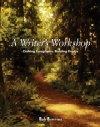 |  A Writer's Workshop: Crafting Paragraphs, Building Essays Bob Brannan,
Johnson County Community College
ESL Concerns
Summary1.Learning a new language can be difficult and frustrating. All the information contained in your text will help you to speak and write American English more fluently. This chapter in particular, though, is designed primarily to answer questions for those who are new to English. |
 |  |  | 2.Count nouns--flowers, clouds, students, books--can be quantified and numerated. Noncount nouns--water, sugar, mud--cannot be quantified and numerated. Noncount nouns do not have a plural form. |
 |  |  | 3.Article use depends on whether the noun it precedes is: count or noncount; general or specific; plural or singular. |
 |  |  | 4.The verbs to do and to have can function as either helper or action verbs. Other verbs that function as helpers are called modals. These helping verbs express requests, doubt, capability, necessity, and advisability. |
 |  |  | 5.Two-part verbs consist of both a verb and a preposition. Such verbs are often idiomatic and informal, and so are especially hard to understand. |
 |  |  | 6.The prepositions on, in, by or at can relate to both place (e.g., The dentist lives on Carmine Street) and to time (e.g., Your appointment is on Thursday). |
 |  |  | 7.Some adjectives gather meaning as they approach the noun, and do not require a comma. |
|



 2002 McGraw-Hill Higher Education
2002 McGraw-Hill Higher Education